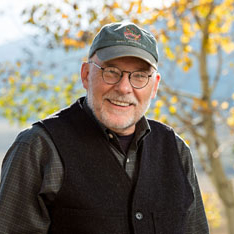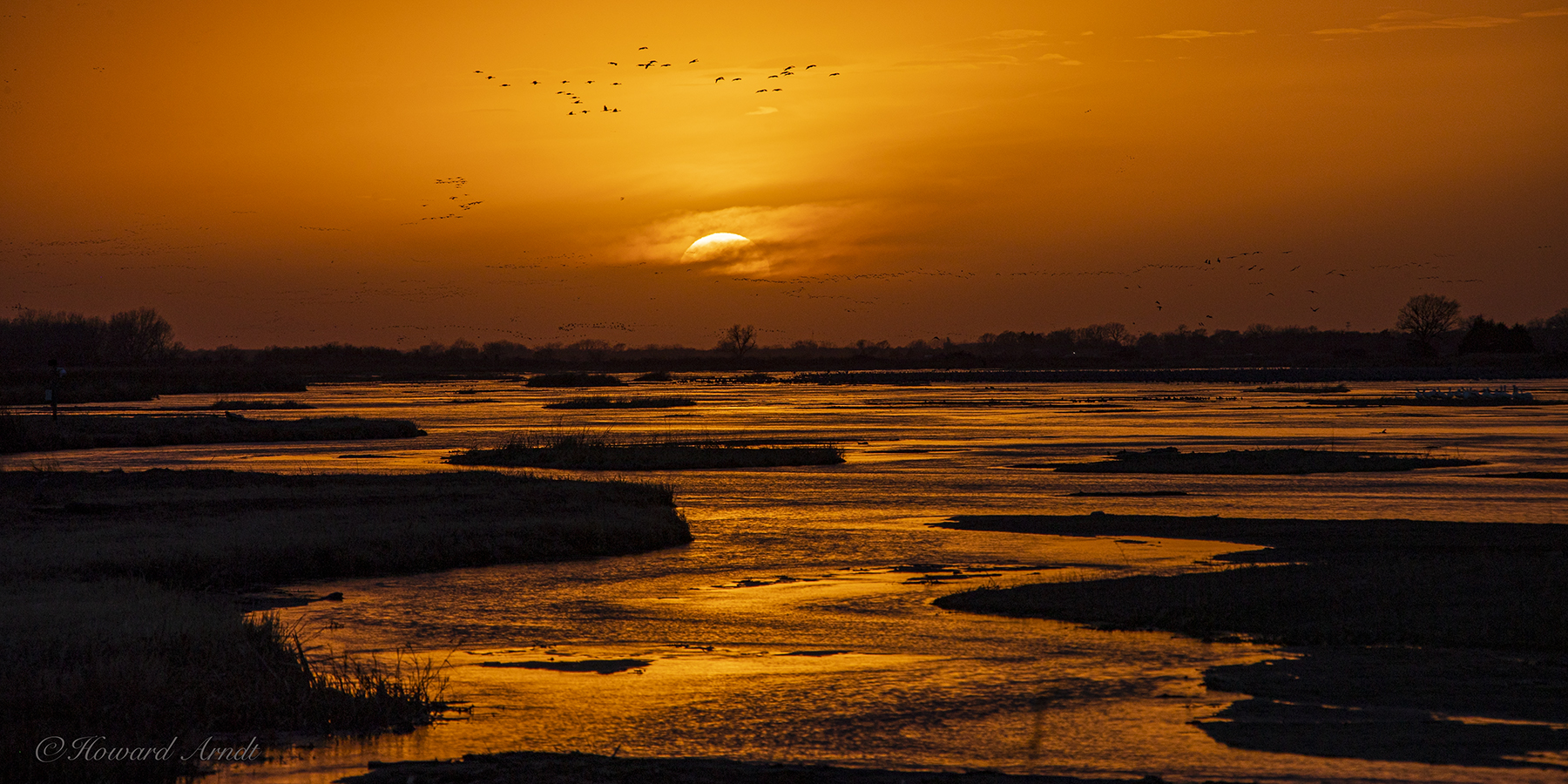Out in the darkness there are 600,000 Sandhill Cranes on the Platte River. They have come back — and so have we.
Our small band is walking like pilgrims to a shrine, through prairie grasses growing on the ancient river bed, towards the living river that is alive with bird and the great burbling communal hymn of migration. We can hear it in the coming dawn, a mile to our left, a mile to our right and straight ahead of us. We whisper our complaints about the cold but we are as happy as any gathering of nature photographers has a right to be. We are about to witness one of the greatest wildlife spectacles on planet Earth.

It is late March in Kearney, Nebraska. Like the cranes migrating up the Central Flyway we have come back to this stretch of braided river. The birds congregate on shallow sandbars while we congregate in blinds on the riverbank, ranked like singers in a choir loft. The birds have stopped here to rest and feed their bodies for the long journey ahead of them up to the Arctic circle. We have come to feed our souls.
Our photographers are heavy laden with long lenses (and high hopes), members of the Summit Sandhill Cranes Photography Workshop — faculty, students, guests, friends, a family of dedicated photographers, some seasoned pros, some phenomenally accomplished amateurs and some rank beginners. Like the birds we do a little dance of joy when we see each other again, sharing tidbits of our life journey since last year when we gathered here.
As we near the blinds we feel the adrenaline rush of anticipation. Once inside the blinds we set about the delicate task of setting up tripods without spilling our precious coffee. We are very lucky: not only do we have access to the best blinds on the river, but we are also getting the inside scoop, instruction from some of the finest nature photographers in the world. Huddled together we listen intently as Melissa Groo and Michael Forsberg whisper out treasured insights about what to expect, how to interpret what will see, and how to capture great images of this spectacle.

But nothing can or will ever prepare you for the sight that unfolds when the windows of the blind slide open. Thousands, tens of thousands, untold thousands of Sandhill Cranes in layer after layer, stretching into the distance across the mile-wide river, lit by the first hint of dawn in the east, standing in shallow waters, some with ice caked around their legs, some still asleep, others bobbing up and down, some dancing, bowing their heads then lifting them to the sky, all the while murmuring to themselves in a song that floats over the river and that we can hear but not understand. How can this all be and me here to see it? I sometimes weep, honestly I do.
As photographers what we feel in those moments is an incredible opportunity, one that will not always come our way, a moment in time when a great gift is in front of us. Down the way I hear someone whisper “Oh, my.” And another whispers “I never knew.” Indeed, this is really something.
For the next hour, maybe two, we are lost in realm of image making. As instructors Dave Showalter and I look for opportunities to aid the students. For my part I urge them to find ways to focus both on the details (the tight bird photos everyone craves and goes for) while also backing off occasionally to capture the grand scene spread in front of us. “Remember to set the stage visually,” I urge, “so that your bird pictures can tell a larger story. Show us what this river looks like. Show us what it is like to be here.”
And then it happens: the multitude rises as one off the river. Perhaps a Bald Eagle on the hunt spooked them. Or perhaps they are just all ready to begin their day of feeding in nearby fields and by some magic of Sandhill Crane chitchat they all know it’s time to go. Whatever, it is always a surprise, one that sets us scrambling to capture the extravaganza of mass flight; birds taking off in echelon, birds filling the air in clouds, sweeping first this way then the other and now heading directly over us. Which way should we look next. It is impossible to know.
And the sound is deafening.
Nothing ever prepares you for the shear cacophony (no other word is adequate) of thousands of cranes giving full voice to their synchronized communal joy of living. It peals across the river and reverberates from the far banks of cottonwood trees. Speech is pointless.
That sound will be with us all day in the classroom while we edit pictures.. It will be with us as we share our pictures during the critiques and while we relish the lectures of our esteemed colleagues. It is the soundtrack in the back of our minds, the ear worm that will not stop, what we hear when our minds wander — and probably when we dream.
That evening we are back in the blinds before the sun goes down, waiting for the birds to return, sharing our good fortune with our friends, snippets of awe and wonder about what we have, together, seen and experienced. It binds us together.

The birds come back to the river from the fields, first in small batches, then as a gathering stream, and then as a raging torrent, a deluge of Sandhill Cranes raining down from the sky and filling the sandbars to overflowing. (How can they possibly be finding space to land?) As darkness overtakes us, our shutter speeds dwindle and we finally forsake image making for the sheer delight of just being there, quiet and serene in this precious moment, here on the Platte River in Nebraska.
The birds will be back next year. And so will we. I know it. So will we.

Jim Richardson
Workshop FacultyJim has work appearing regularly in National Geographic magazine and National Geographic Traveler in addition to Geographic books. Jim is on assignment for Nat Geo projects almost full time and for good reason. Richardson, a onetime newspaper photographer in Kansas and Colorado, brings amazing story-telling techniques along with detailed research to his pictures. Thirty years ago, he began photographing the area around his hometown in north central Kansas.

